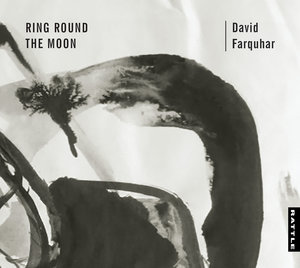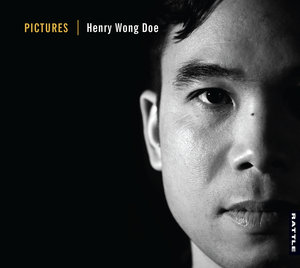The New Zealand Symphony Orchestra presents:
VIVALDI – The Four Seasons Op.8 Nos 1-4 *
BERLIOZ – Roman Carnival Overture Op. 9
RESPIGHI – Pini di Roma (Pines of Rome) 1924 **
Angelo Xiang Yu (violin) *
Brett Mitchell (conductor)
New Zealand Symphony Orchestra
Members of the Wellington Brass Band**
MIchael Fowler Centre,
Wellington
Saturday, 12th May 2018
What a boringly predictable world it would be if everything in it turned out as one anticipated! I sat pondering this earth-shattering truism during the interval of Saturday evening’s NZSO concert in the wake of the most inspiring and life-enhancing performance of Antonio Vivaldi’s “The Four Seasons” I’ve heard since first encountering New Zealand violinist Alan Loveday’s now-legendary recording of the work with Neville Marriner’s Academy of St.Martin-in-the-Fields, from the 1970s. Just as that performance blew away the cobwebs and reinvented the work for its time, so did Angelo Xiang Yu’s absolutely riveting playing of the solo violin part and the NZSO players’ galvanic response do much the same for me on this occasion, in the concert hall.
In fact I was expecting very little to come from this, my latest encounter with the work, for the simple reason that I’d heard it played on record so many times and, of course, misappropriated over the years in a thousand different ways – could I face the prospect of those Bremworth Carpet TV ads of the 1960s coming back to haunt me yet again? I felt somewhat “jaded” at the thought of it all, and had difficulty imagining what yet another performance would bring to the music that could be of any new and compelling interest.
My focus in the concert itself on this occasion was firmly centred on what I expected would be the evening’s highlight, Respighi’s Pini di Roma (Pines of Rome), a work I’ve remained violently in love with ever since being “blown away” by my first hearing of the work in concert, some time during the 1970s. And Berlioz’s music, too, had become something of a passion for me, ever since my somewhat bemused initial encounter with an LP containing a number of “Overtures” all of which seemed distinctly odd-ball, the music volatile and angular, though strangely compelling – I persisted, and grew to love their idiosyncrasies, attracted by the composer’s uninhibited use of dynamic and spontaneous contrasts between sheer brilliance and ravishing beauty.
“Lord, what fools we mortals be…” wrote some obscure playwright or other; and my expectations of what I would cherish from the experience of hearing this particular concert were completely confounded, almost right from the first note of the Vivaldi work. I listened to the thistledown-like opening, and straightaway pricked up my ears at its wind-blown, spontaneous-sounding quality, replete with inflections of phrasing and dynamics that suggested the musicians seemed to really “care” about the music.
Both Angelo Xiang Wu and conductor Brett Mitchell readily encouraged the playing’s “pictorial” effects suggested by the music’s different episodes, which followed the descriptions written in a set of poems, presumably also by the composer, which were intended to give listeners precise detailings of what the music is actually “about” – unfortunately these weren’t reproduced in the written programme. I thought I’d go a little way towards making good the omission, by including the English version of the verses that accompanied the opening Concerto, “Spring”.
Allegro
Springtime is upon us.
The birds celebrate her return with festive song,
and murmuring streams are softly caressed by the breezes.
Thunderstorms, those heralds of Spring, roar, casting their dark mantle over heaven,
Then they die away to silence, and the birds take up their charming songs once more.
Largo
On the flower-strewn meadow, with leafy branches rustling overhead, the goat-herd sleeps, his faithful dog beside him.
Allegro
Led by the festive sound of rustic bagpipes, nymphs and shepherds lightly dance beneath the brilliant canopy of spring.
Thus we heard the brilliant birdsong, shared and echoed between the soloist and the leaders of each of the two violin sections – enchanting! The “thunderstorms” were allowed their full dynamic effect, with the playing almost “romantic” in its flexibility of phrasing and pulse, very free and spontaneous-sounding. In the slow movement, the exquisitely-moulded ensemble textures beautifully “caught” the rustic beauty of the “leafy branches” over the “flower-strewn meadow”, with a doleful, repeated viola note depicting a dog’s disconsolate barking besides its sleeping master. Angelo Xiang Yu’s delicious and freely “pointed” solo playing then beautifully complemented the “festive sound of rustic bagpipes”, the playing by turns jaunty and gently yielding in its “end-of-day” ambience.
From this the playing and its “engagement factor” simply went from strength to strength throughout each of the remaining concerti. The opening of “Summer” brought forth sounds whose charged, anxious quality was almost portentous in its impact, which the furious beginning of the allegro vividly supported. Together with Andrew Joyce’s solo ‘cello-playing, Xiang Yu’s violin vividly conveyed the restless quality engendered by the heat, and the growing fearfulness caused by the oncoming storm, the players relishing the adagio/presto alternations of the middle movement, depicting flies, gnats and the oncoming tempests. And the concluding presto was quite simply a tour de force of sound and fury, the notes flailing and stinging in a tremendous display of both virtuosity and focused interpretative intent.
“Autumn” afforded us considerable relief on this occasion, the opening jolly and bucolic, the interactions between solo violin and the ‘cello again delightful with Xiang Yu’s playing exhibiting such characterful humour in places (in fact I couldn’t help chortling out loud at his impish hesitations at one point, which, I’m sorry to say, startled my concert neighbour!). And while, throughout the slow movement, we got nothing like violinist Nigel Kennedy’s infamous “nuclear winter” realisation in his 1989 recording (he’s recorded a more recent version, incidentally, called “Vivaldi – the New Four Seasons” one even more “interventionist”, for those who crave adventure!), the “sleep without a care” sentiments of Vivaldi’s poetry was certainly given instrumental voice from all concerned. Afterwards, as befitted the refreshment sleep gave, the music awoke to plenty of bounce and energy – fortunately, the musical depictions of the hunters harrying their unfortunate prey weren’t as graphic and piteous as the poem’s words suggested.
Came Winter, with its bleak, spectral timbres suggesting snow and ice – I loved the palpable “shudder” with which Xiang Yu concluded each of his opening “shivering” solo flourishes, and enjoyed the dramatic crescendi generated by both the violinist and the ensemble as the movement ran its course. The Largo gently scintillated via delicate pizzicato strings and Douglas Mews’ crisp harpsichord continuo playing, as the violin sang of the joys of contented rest by the fire, though the final movement returned us to the elemental fray, via the “icy path” and the “chill north winds”, if not without some brief reflection on winter’s “own delights”. However, those same chill winds had the last word, the soloist conjuring up a mini-tempest which the ensemble catches onto, driving the music to a brilliant, no-nonsense conclusion!
I never expected to write so much about this performance, but I simply had to try and convey something of the thrill of engagement with the music-making that I felt, all the more telling for me through its unexpectedness, of course! After deservedly tumultuous applause, Xiang Yu came back and played us, unaccompanied, some Gluck, the Melodie from Orfeo et Euridice, the playing evoking its own unique world of stillness and resignation.
Undoubtedly the stunning impact of this first half went on to play some part in my reaction to what followed – and I did think that, for all its merits, the performance of Berlioz’s most well-known Overture , Roman Carnival (Le Carnaval Romain) never quite attained that level of focused intensity which made the Vivaldi such a gripping experience. For me the most memorable moments were the lyrical sequences which dominated the overture’s first half, including a lovely cor anglais solo, played here by Stacey Dixon – whose name wasn’t listed among the NZSO players in the programme. The more energetic episodes in the piece’s second half were delivered with skill and polish, but I felt that the music’s dangerous “glint” and sense of “edge” hadn’t entirely escaped the comfort zone, so that we weren’t lifted out of our seats and carried along amid waves of wild exuberance – the efforts of the percussion, for instance, I thought wanted more ring and bite (though partly a fault of the MFC’s acoustic difficulty in effectively “throwing” the sounds from the rear of the orchestral platform up and into the audience’s spaces).
Having said all of this, the spectacular opening of Respighi’s Pini di Roma (Pines of Rome), had plenty of impact, conductor Brett Mitchell keeping the music’s pulses steady, thus allowing the players space in which to generate plenty of weight of tone, and flood the ambiences with that barely-contained sense of excitement suggested by the opening Pines of the Villa Borghese. As the tempi quickened, everything came together in a great torrent of sound, as overwhelming in its insistence as tantalising in its sudden disappearance, leaving a vast, resonating space of darkness and mystery.
Conductor and players here enabled those spaces to be filled with properly subterranean sounds of breath-taking quality, as if the earth itself was softly resonating with its own music – strings, muted horns and deep percussion allowed winds to intone chant-like lines as if we could hear the voices of dead souls who were continuing to plead for salvation, music of Pines near a Catacomb. An off-stage trumpeter (Michael Kirgan) delivered a faultlessly beautiful recitative from the distance, just before the chant-like music seemed to us to swell up from underground and raise a mighty edifice of sound, capping it with a terrific climax!
From the fathomless gloom of the aftermath came pinpricks of light in the magical form of piano figurations, awakening the chaste limpidity of a clarinet solo, floated with fairytale enchantment by Patrick Barry and carried on by the oboe and solo ‘cello amid great washes of impressionistic hues and colours – Holst, Debussy. Ravel and Richard Strauss were all there, amongst the Pines of the Janiculum! – the reappearance of the clarinet brought forth the nightingale’s song to charm and enthrall us just before the onset of distant warlike sounds, a steady, remorseless tramping of marching feet whose purposeful trajectories announced the coming of the Emperor’s legions, passing the Pines of the Appian Way en route to the Capitoline Hill.
For this performance the NZSO enjoyed the sterling services of a number of players from the Wellington Brass Band, whose body of tone with that of the full orchestra’s at the piece’s climax had an almost apocalyptic (I almost wrote “apoplectic”!) effect! A pity, though, I thought, that those first distant trumpet calls couldn’t have been that much more more spatially placed, perhaps made from offstage, to give an even greater sense of distance and expectation and impending glory at the climax. As he’d done throughout, Brett Mitchell controlled both momentums and dynamics with great tactical and musical skill, holding the legions in check until they actually swung into view in the mind’s eye, and came among us, amid scenes of incredible splendour and awe. Respighi actually wanted the ground beneath his army’s feet to tremble with the excitement of it all, and conductor and players triumphantly achieved that impression over the piece’s last few tumultuous bars! Bravo!

